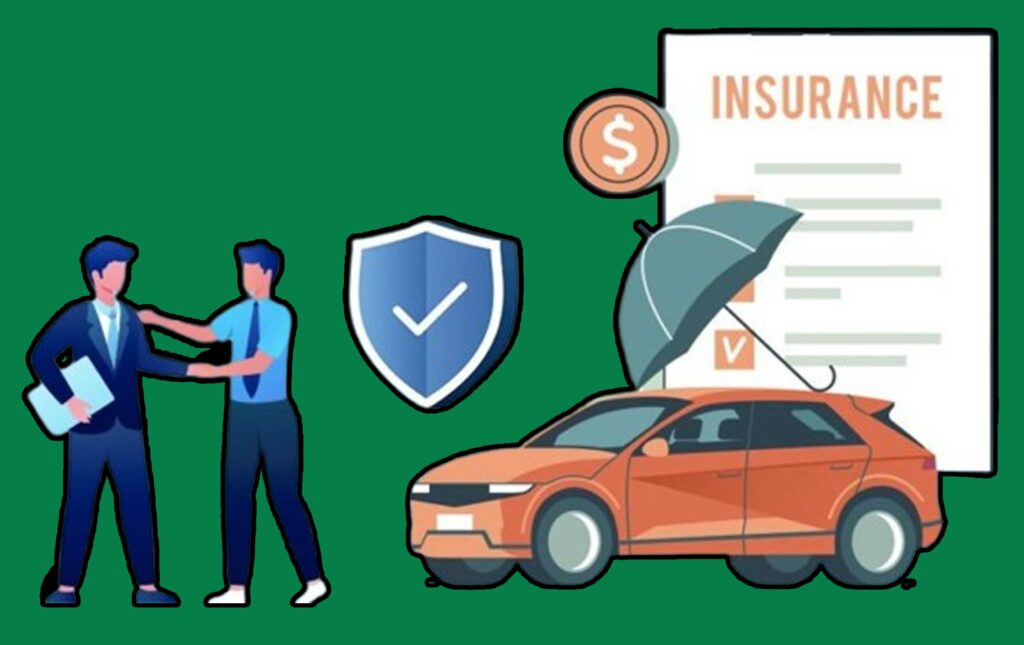Six Types of Car Insurance Fraud – Car insurance is designed to protect drivers from financial loss after an accident or unexpected event. It ensures that people can repair their vehicles, cover medical expenses, and recover from damage without facing unbearable costs. However, not everyone uses the system honestly. Each year, insurance companies lose billions of dollars to car insurance fraud—a crime that involves deliberately deceiving an insurer for personal gain.

Car insurance fraud doesn’t just affect companies; it affects every honest driver on the road. When fraudulent claims rise, insurance companies increase premiums to recover their losses. This means that hardworking policyholders end up paying higher rates for coverage they rightfully deserve. Fraud also wastes valuable resources, delays legitimate claims, and erodes trust between insurers and consumers.
Understanding the types of car insurance fraud that exist is one of the best ways to prevent falling victim to them—or being wrongly accused of one. Some scams are well-organized, involving multiple people, while others are simple exaggerations of genuine claims. Regardless of how small or large they may seem, all forms of insurance fraud are illegal and can lead to severe penalties, including fines, loss of coverage, and imprisonment.
Six Types of Car Insurance Fraud
Below are six of the most common types of car insurance fraud, how they work, and what you can do to protect yourself.
1. Staged Accidents
Staged accidents are among the most dangerous and costly forms of insurance fraud. They occur when one or more individuals intentionally cause a collision to file false claims for vehicle repairs, medical bills, or both. For example, a driver may deliberately slam on the brakes in front of another vehicle, making it appear as though the trailing driver was at fault.
These schemes often involve multiple participants, including fake witnesses, dishonest repair shops, and corrupt medical providers who exaggerate injuries. Staged accidents can put innocent drivers in harm’s way and result in higher premiums for everyone. To protect yourself, stay alert on the road, install a dashcam, and gather as much evidence as possible if you suspect foul play during an accident.
2. Exaggerated Claims
Not all insurance fraud involves completely fake accidents. Sometimes, it’s as simple as exaggerating the truth. This happens when a driver inflates the extent of vehicle damage or medical injuries after a legitimate incident. A small dent might be claimed as major structural damage, or a minor neck strain could be exaggerated into a long-term disability.
These exaggerations increase claim payouts and cost insurers millions annually. Adjusters often detect such fraud by comparing repair estimates, reviewing medical documentation, and checking inconsistencies in statements. To avoid suspicion, always report accidents honestly and provide accurate evidence such as photographs and repair invoices.
3. Phantom Vehicles or Hit-and-Run Fabrications
Another common scam involves phantom vehicles—fake hit-and-run incidents designed to cover up a driver’s fault or damage they caused themselves. In this case, a person might claim another car struck them and fled the scene, leaving no witnesses or evidence.
Insurance investigators carefully examine the details of these claims, looking for inconsistencies in damage patterns or a lack of supporting proof such as CCTV footage or eyewitness accounts. Fabricating a phantom vehicle is a serious offense that can result in criminal charges. The best way to protect yourself is to file accurate reports and contact law enforcement immediately after any legitimate hit-and-run.
4. Rental and Repair Shop Scams
Some car insurance fraud involves collusion between drivers and service providers such as repair shops, tow truck operators, or rental agencies. These scams can include overcharging for repairs, billing for unnecessary parts, or keeping a rental vehicle longer than required to inflate charges.
Fraudulent repair shops might also use low-quality parts while billing insurers for premium materials. To avoid falling into such traps, always use repair shops recommended by your insurer, ask for detailed invoices, and get multiple estimates before approving repairs. Honest communication and transparency with your insurance company are key to preventing these costly schemes.
5. False Medical Injury Claims
Medical-related car insurance fraud is one of the most sophisticated forms of deceit. It involves individuals or organized groups submitting fake or exaggerated medical claims after an accident. In some cases, the injuries never happened; in others, clinics bill insurers for treatments that were never provided.
Fraudulent medical claims are difficult to detect because they often rely on falsified records and fabricated medical reports. However, insurers work with doctors, auditors, and law enforcement agencies to identify suspicious billing patterns or repeat offenders. Policyholders should ensure their medical treatments are legitimate and properly documented to avoid any issues during claim reviews.
6. Premium Evasion and Misrepresentation
Premium evasion happens when applicants lie on their insurance application to secure a lower rate. They might provide false information about where the vehicle is stored, who the main driver is, or how far they drive each year. Some people even register their cars in different locations to take advantage of cheaper rates.
While this might seem harmless at first, misrepresentation is a form of fraud and can result in denial of claims, policy cancellation, or legal action. Insurers verify details through driving records, telematics data, and claim histories. Honesty during application ensures your policy remains valid and protects you from unnecessary complications in the future.
Final Thoughts
Car insurance fraud is a serious problem that impacts everyone—not just the perpetrators. It increases premiums, slows down legitimate claims, and undermines trust in the entire insurance system. Whether it’s a staged accident, a fake injury, or a dishonest repair claim, every act of fraud carries consequences.
By understanding these six types of car insurance fraud, drivers can recognize warning signs, stay alert, and help keep the system fair. Always report suspicious behavior, cooperate with your insurer, and be truthful in your claims. Responsible policyholders play an important role in keeping premiums affordable and ensuring that insurance continues to serve its real purpose: protecting people in times of genuine need.



